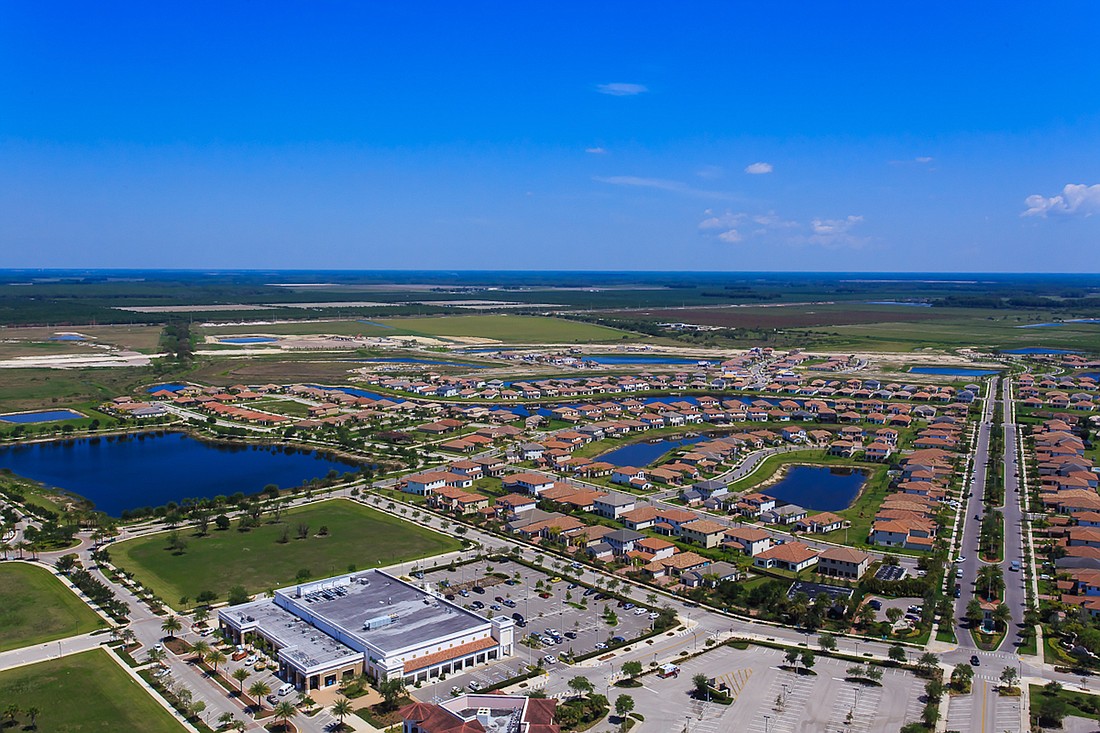- April 8, 2025
-
-
Loading

Loading

Throughout the country, the COVID-19 pandemic has rocked business and sent much of the commercial real estate industry reeling.
But in Southwest Florida, overall real estate activity — as measured in deed transactions and permits — has increased considerably since the start of the health crisis in March.
Permits pulled for residential buildings — from single-family homes to apartment complexes — are up 19.3% for the 12-month period ended Sept. 30 in Charlotte, Lee and Collier counties.
Permits are forecast to be pulled at only a slightly lower level than the 18,700 of the Oct. 1 to Sept. 30, 2020 period over the next year in the three-county region, according to statistics and an analysis by LSI Cos., a Fort Myers-based commercial real estate brokerage firm.
“It was a bit astounding to us at first, to be honest,” says Justin Thibaut, LSI’s president. “It’s the highest rolling 12-month permit activity this region has seen since 2006.”
Southwest Florida’s permit surge stands in contrast to other areas of the Gulf Coast, too. In St. Petersburg, permit activity was off 14 for the fiscal year ended Sept. 30, according to research firm Catalyst. The city says the pandemic’s curb on in-person processing was to blame.
At the same time, pockets of Southwest Florida are experiencing record sales of residentially zoned land and dwellings.
In August in Lee County alone, deed transactions totaled $1.2 billion — the fifth highest amount among Florida’s 67 counties. Only Palm Beach, Dade, Broward and Orange counties in South Florida, where prices tend to be higher, generated more volume overall.
Various communities are reporting near record levels of activity or sales, too.
Most notably, Babcock Ranch — the Kitson & Partners-developed master-planned community that spans portions of Charlotte and Lee counties — pulled 529 new residential permits over the 12-month period.
Likewise, The Place at Corkscrew, an Estero development in Lee County from Cameratta Cos. featuring homes by Pulte Homes and Lennar Corp., pulled 345 permits over the same period.
In Collier County, the planned Ave Maria community by Barron Collier Cos. and partners continues to be among the most active in the state in terms of new home building and sales.
And Cape Coral, another Lee County city where many single-family homes sell for between $275,000 and $325,000, reported 354 single-family permits were pulled last month — more than in all of 2012.
LSI executives say historically low interest rates and in-migration sparked largely by the pandemic has led to the surge in activity.
“The trend of in-migration is being exacerbated by COVID-19, certainly, and by the increased buying power many residents especially from the Northeast feel they have in our market and because of the low interest rate environment,” Thibaut says.
To a lesser extent, as well, many apartment dwellers in the region are moving out of their quarters and into single-family homes.
By comparison, total residential permit activity in the three-county region totaled 15,500 in 2016; 17,600 in 2017; and 15,900 in 2018. LSI is projecting builders will pull between 14,000 and 16,000 permits between Oct. 1 and Sept. 30, 2021, as new communities take root.
Lee County, in particular, has remained a magnet for new residents. In 2019, the county’s population grew by 2% vs. that of 2018 — twice the growth rate in Florida and four times the national average.
To meet the demand, national and regional builders have stepped up their land acquisitions in the past few months.
Pulte Homes, for instance, invested $27.57 million in Southwest Florida land between June and October, according to property records from the three counties.
Neal Communities, a Sarasota-based regional builder, spent $17.8 million on land, while DR Horton, the nation’s largest builder, paid $3 million during the five-month period.
The deals largely reversed a quiet spring for builders, when the pandemic was emerging.
Nelson Taylor, LSI’s market research director, says that builders also have shifted their focus away from large land acquisitions to smaller purchases of a few lots at a time in more established communities.
“They’ve developed the ability to transform spot lots to vertical product in short order,” Taylor says. “That way, they can build immediately on six or seven lots at a time without having to shell out large amounts of capital in an era where financing is tight.
“Developers now are buying what they can to meet the demand from consumers as good sites seemingly shrink.”
But the surge has, perhaps not surprisingly, pushed up home prices and whittled away at existing inventory.
Taylor says home prices have risen roughly 15% in the past year in the region.
Thibaut doesn’t expect activity to slow in the coming year, either.
“The number of residences under construction has gone up dramatically in the past six months,” he says. “So as a result, we’re going to see a lot of new developments begin in 2021 and deliveries well into 2022.”